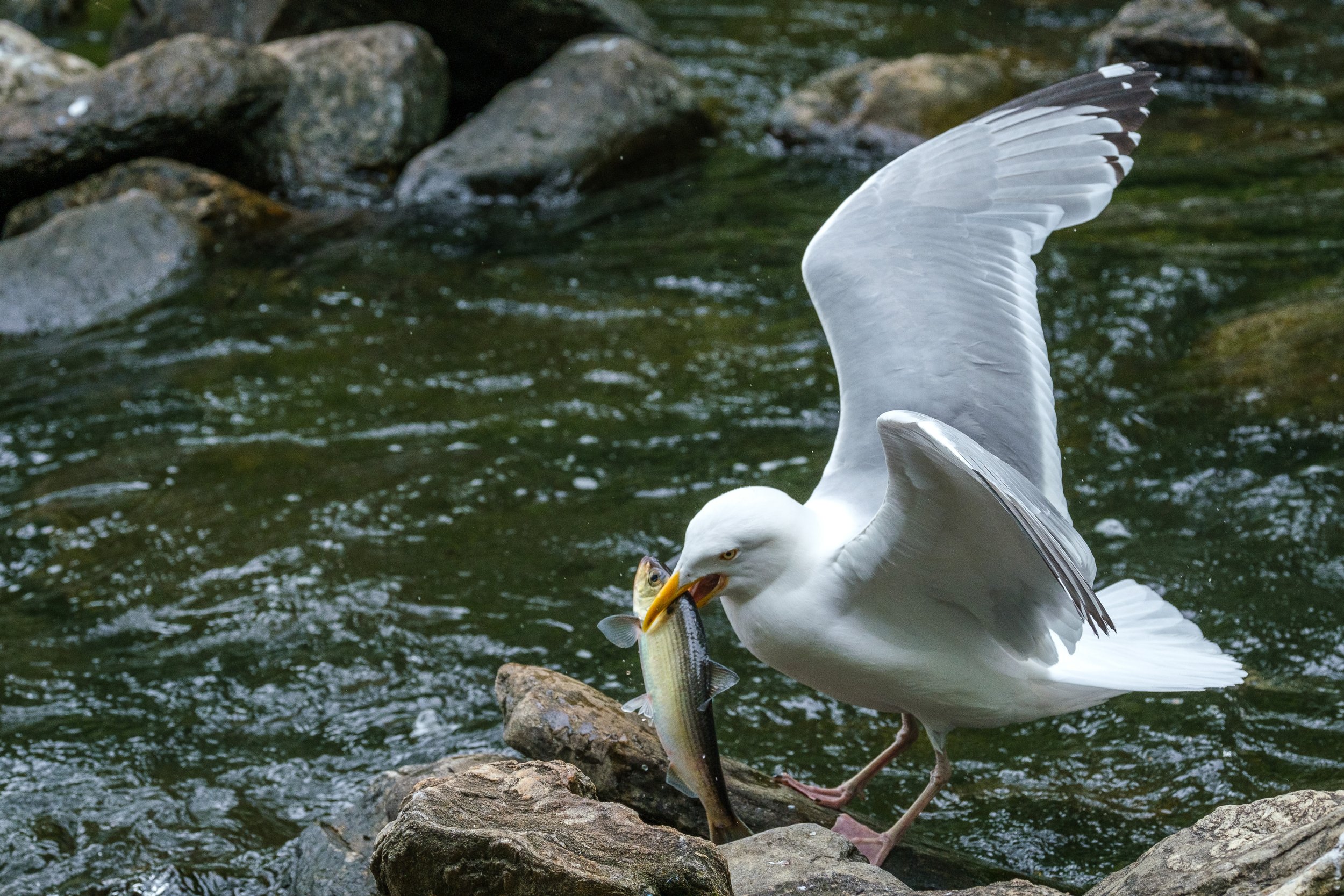So… you might ask what is an Alewive. Well, here is their story…
This story began with the alewife, an anadromous—or migrating from the sea to rivers to spawn—species of herring slightly larger than a human hand. The salty, bony fish was a dietary staple of the region’s Indigenous Algonquian people, who used nets to catch the alewives during the spring migration. The tribe even named the area Damariscotta, “place of an abundance of alewives.”
Completed in 2017, the renovated ladder, a serpentine shape shaded by mature trees, now ushers more than one million alewives to their natal waters. It winds 1,500 feet up the hill, rising 42 vertical feet from top to bottom. As water cascades downstream, fish leap up through weirs, then rest in a pool, and repeat the process until they reach the lake.
When they begin at the bottom, fish have to instinctively know which way to turn, however. Between 200,000 to 500,000 alewives go the wrong way and end up in the harvester instead. This traditional machine at the ladder’s base is a giant steel contraption that scoops errant fish into a holding pen and ushers them along a raised conveyor belt to waiting lobstermen. Volunteers wearing rubber waders manually load alewives in an age-old practice that has changed little since the 19th century.
So, while the Alewives are making their way up the ladder, there are some hungry birds waiting. Seagulls are the most prominent, while occasionally you will see Osprey, Bald Eagles, and Herons. Unfortunately, on my trip to the ladder this year, I only saw the Seagulls diving for the fish. Here are some of the photos I took of the Seagulls eating the Alewives….









